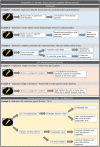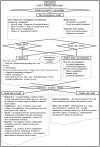Forensic, legal, and clinical aspects of deaths associated with implanted cardiac devices
- PMID: 38090699
- PMCID: PMC10713765
- DOI: 10.3389/fpsyt.2023.1278078
Forensic, legal, and clinical aspects of deaths associated with implanted cardiac devices
Abstract
As the population ages, the prevalence of heart failure and individuals wearing an implanted cardiac device is increasing. The combination of different underlying pathophysiologies and (the combination of) implanted cardiac devices can become a challenge with regard to the determination of cause and manner of death in such individuals. Additionally, heart disease is frequently associated with mental disease, ranging from anxiety and depression to suicidality and suicide (attempts). At the same time, the correct diagnosis of cause and manner of death is the basis for quality assurance, further therapeutic advances, legal safety, and suicide prevention. By that, an interdisciplinary field between legal medicine, clinicians, and law enforcement opens up. In this field, the different participants can simultaneously benefit from and need each other. For example, legal medicine experts need investigatory results and clinical expertise for the interpretation of readout data of implanted cardiac devices in order to correctly determine the cause of death. A correctly determined cause of death can assist law enforcement and help clinicians to further improve various therapeutic approaches based on correct mortality data collection. In addition, it is the basis for identification of suicides of device carriers, allowing psychological and psychiatric experts to better understand the burden of mental disease in this particular cohort. Against this interdisciplinary background, this manuscript summarizes information about psychiatric comorbidities and suicidality while being on a device. Thereby, basic information on complications and malfunctions of implanted cardiac devices, device-associated deaths with particular emphasis on device manipulation is displayed as basic information needed for correct determination of the cause of death. Also, legal and ethical issues in this field are outlined. The final result is a proposal of an interdisciplinary assessment workflow for a conjoint approach to improve the diagnosis of deaths associated with implanted cardiac devices. It will allow for a differentiation between an individual who died with or due to the device.
Keywords: cause of death; end stage heart disease; ethics; implanted cardiac devices; left ventricular assist device; mental co-morbidity in cardiac disease.
Copyright © 2023 Federspiel, Potente, Abeln, Hennemann, Heinbuch, Burkhard, Richl, Kettner, Lux, Schmidt, Verhoff and Ramsthaler.
Conflict of interest statement
The authors declare that the research was conducted in the absence of any commercial or financial relationships that could be construed as a potential conflict of interest.
Figures


References
-
- Glikson M, Nielsen JC, Kronborg MB, Michowitz Y, Auricchio A, Barbash IM, et al. 2021 ESC guidelines on cardiac pacing and cardiac resynchronization therapy: developed by the task force on cardiac pacing and cardiac resynchronization therapy of the European Society of Cardiology (ESC) with the special contribution of the European heart rhythm association (EHRA). Eur Heart J. (2021) 42:3427–520. doi: 10.1093/eurheartj/ehab364, PMID: - DOI - PubMed
Publication types
LinkOut - more resources
Full Text Sources
Research Materials

